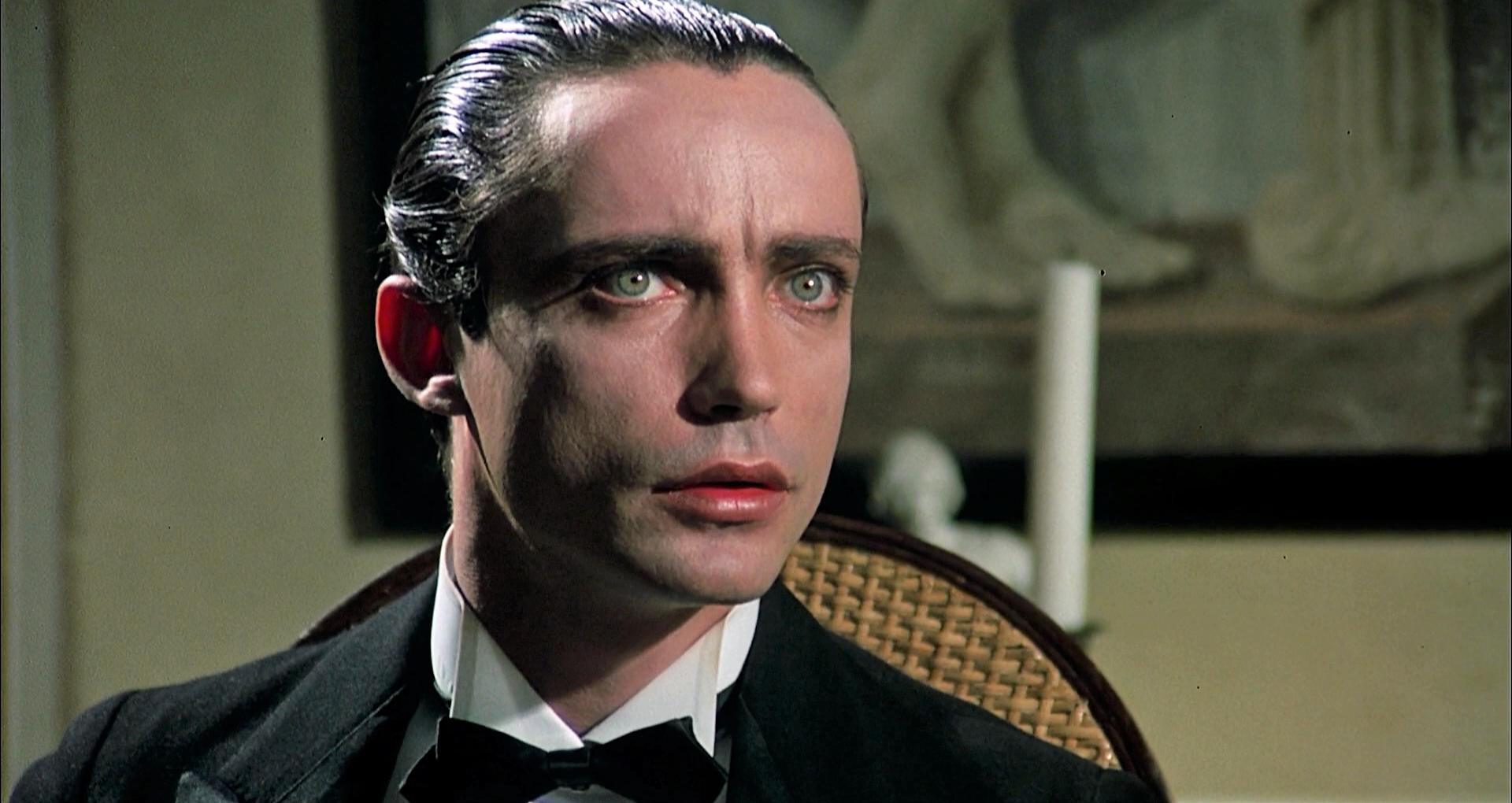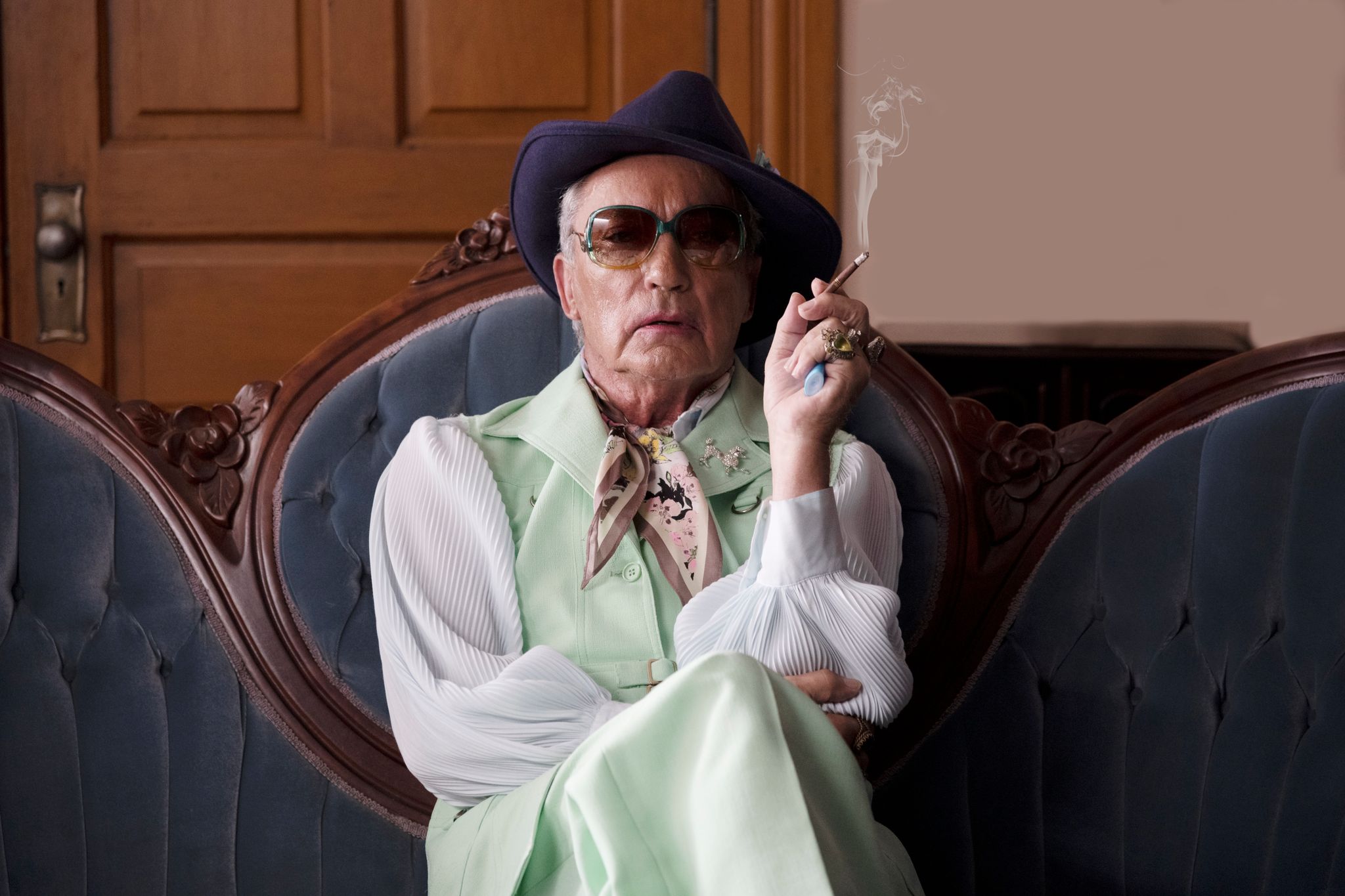“Beware!” Udo Kier shouts at Madonna in German from behind the camera in the opening seconds of her music video for her 1992 song “Deeper and Deeper,” black eyes wide against an onyx abyss, dispensing an almost philosophical wisdom from behind a pop sheen. “Our idols and demons will pursue us until we learn to let them go!”
That dichotomy would follow Kier throughout a long career that was almost staggering in its prolificness—nearly 250 roles across a variety of mediums, from film to TV to theater to video games. And with his passing this past Sunday at age 81 (a good long run that feels far too soon), he leaves behind a body of work that touches on the queer, the camp, the arthouse, and the mainstream. He was a weirdo who managed to expose his weirdness to the public in ways that, due to his prodigious output, they could hardly escape. But it was so compelling that we never wanted to look away.
Kier’s own birth story feels like something out of one of his pictures, at least in part because Nazis are involved: Mere moments after he was born in October of 1944, the hospital where he was born was bombed by the Allies; he and his mother had to be rescued from the rubble. (His father had left the family long before Udo was born.) As a teen, he spent time in “working-class” bars with future director Reiner Werner Fassbinder; together, the pair would drink sodas and leer at the patrons, many of whom were queer or trans. (Kier would be openly gay for the majority of his life.)
He moved to London when he was 18 to learn English for clerical work, and had no acting aspirations. But his elfin face and expressive eyes turned heads nonetheless, and he would find himself discovered and cast in 1966’s “Road to Saint Tropez.” But his real breakout would come from a fateful meeting with Andy Warhol collaborator Paul Morrissey on an airplane, who was so struck by his look that he would cast him immediately in the title role of 1973’s “Flesh for Frankenstein,” and later 1974’s “Blood for Dracula.” These works positioned Kier as decidedly ribald, transgressive forms of the classic horror figures: His Frankenstein almost sexually dedicated solely to his science, his Count Dracula the apex of sexual frustration as he tries in vain to find virgin blood for his appetites. “The blood of these whores is killing me!”

In these earlier roles, the Kier phenotype would be firmly established: The opening credits of “Dracula” keep us in close-up of Kier’s young, beautiful visage, his piercing green eyes just off-screen as the camera studies his high cheekbones. Morrissey told him he had to lose ten pounds in a week for the role; Kier starved himself so much, eating only salad leaves, that he spent much of the film in a wheelchair. Yet all of his beauty and ferocity remain; Vittorio de Sica’s Marchese di Fiori waxes rhapsodic about Dracula’s name being a perfect mix of “Orient and Occident,” but he may as well be talking about Kier’s own exotic features.
From here, Kier’s star rose, and he found success in films like “Suspiria” before kicking off a long-standing collaboration with Lars Von Trier; his first appearance of many was as a cameo as himself in “Epidemic,” where he would recount the real-life story of his birth in one of the film’s most arresting sequences. (He would later appear in virtually all of Von Trier’s films, from “Melancholia” to “Nymphomanic” to “The House That Jack Built.”)
Kier loved building these deep, abiding relationships with acclaimed filmmakers, which at least partly explains his robust filmography. His leap from European arthouse fare to the States came with Gus Van Sant, who cast him in the small, but crucial role of Hans, an older mark for River Phoenix and Keanu Reeves’ hustlers; his standout scene, where he reenacts an old German theater act with a lamp in a hotel room, feels like a scream of joy and activity into the film’s lonely world.
From there, his uniquely European arthouse face would be plastered across mainstream Hollywood blockbusters like “Ace Ventura: Pet Detective,” “Blade,” and “Armageddon.” Often, he played scientists, Nazis, and other genres of deeply German weirdo. Half the time, he was a vampire. But his eccentricity, his theatricality, was never nullified by the higher profile of these productions; either these filmmakers knew just how much Udo to sprinkle in their four-quadrant fare, or he knew how to maintain his singular image in these less artistically unrestrained productions.
In so doing, Kier built himself his own little island of cult stardom—audiences who knew how to find him swam deep in the pool of his hundreds of works, and those who didn’t still got to be surprised by glimpses of his haunting, intense visage. Even in the realm of video games, he got to be weird: Take Yuri in “Command & Conquer: Red Alert,” he struck a strange figure with his dark-brown goatee and stylized forehead tattoo, flanked by a metal headband that cemented his science-fiction look. (His face, alien-looking as it was, always suited the futuristic; see “Johnny Mnemonic” or his role as a space-faring Nazi in “Iron Sky.”)
There was always something of the seductive for Udo, playing on his own real-life queerness to navigate the queer lenses of European and American cinema. More than many other queer actors of the day, Kier delighted in his theatricality, the eroticism of his early works carrying through into a distinctly sensual energy that made you feel he was just as likely to seduce you as kill you, regardless of your gender. It made sense that he played vampires so many times; vampires have always acted as symbols for the abject, the queer, the outsider. Kier turned his perceived strangeness into a superpower, the threat that could also threaten to liberate you from your own social prisons.

Despite decades as a strong supporting player, Kier never quite got the showcase as a lead that he likely deserved. That is, until 2021’s “Swan Song” (no, not that one), the low-budget queer dramedy about the real-life Pat Pitsenbarger, the “Liberace of Sandusky, Ohio.” As Pat, Kier is haughty, sensitive, wearied at a life where his open queerness cost him dearly—including his lover, who passed of AIDS without leaving a will, offering Pat nothing of their decades-long relationship. Here, he gets the chance to command scenes in ways he previously never got to, scoffing and deadpanning his way across a psychological reckoning of his lonely, queer life.
In one scene, he imagines a conversation with a dead friend as they watch a young gay couple happily play with their child in the park. “I would never know how to be gay like that,” he laments, pouting in his lime-green pantsuit. But in an age where queerness in cinema is a bit more accepted (or, at least, assimilated), Kier’s proud embrace of his queerness as outsiderness, whether as a mad scientist, a lonely hustler, or even a vampire, makes him feel like a pioneer.
It feels strange to mourn the work we never got from an actor who had been working for 60-plus years. But even this year, we were getting great work from him in “The Secret Agent,” and the promise of a collaboration with video game titan Hideo Kojima for his motion-captured horror game, “OD.” Van Sant and Von Trier and so many of his collaborators are still around (including S. Craig Zahler, who’d used him in “Brawl in Cell Block 99” and “Dragged Across Concrete”). He was always ready to pick up the phone and work, even if it was just to play Adolf Hitler….again. He refuses to let his idols and demons pursue him, but rather than letting them go, he embraced them. And he turned them into a career as one of cinema’s most fascinating faces.
In an interview with The Guardian, Kier once said, “When I have a part that isn’t the leading part, I want to act in a way that people remember.”
“Otherwise, what is the point?”
from Roger Ebert https://ift.tt/TJhDIfY

.png)
.png)

